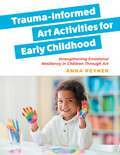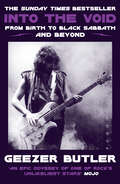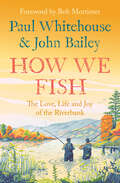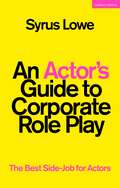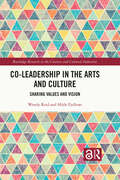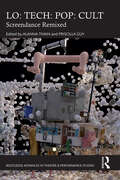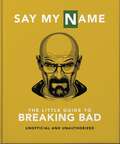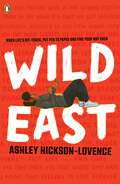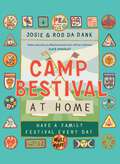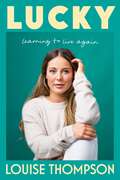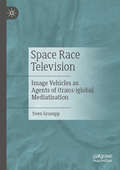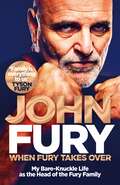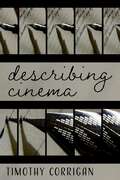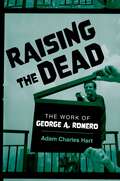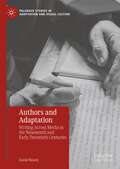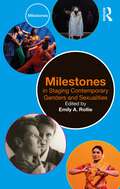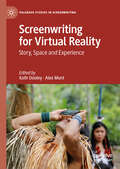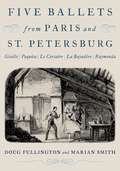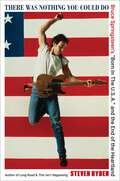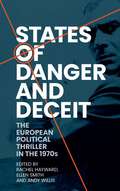- Table View
- List View
Trauma-Informed Art Activities for Early Childhood: Using Process Art to Repair Trauma and Help Children Thrive
by Anna ReynerWhy Art & Trauma? By making their own choices as they engage in sensory art experiences, children gain confidence, release stress, express emotions, and develop critical-thinking skills. Art offers a unique opportunity for children to safely experiment with the physical world and re-wire their brains to reduce the negative effects of trauma, all while learning to identify as creative thinkers. This highly illustrated and easy-to-use resource supports trauma-informed work with children ages 3-8. It delves into both the theory and practice of therapeutic art and includes 21 original art lessons and 60 art techniques, all presented visually for ease of use. Both text and illustrations demonstrate how to create a safe, non-retraumatizing environment for children to experience safety, connection and calm. Ideal for implementing into classroom environments, including preschools, kindergarten, early primary grades, afterschool programs, child counselling centers and community-based youth programs, this professional resource is perfectly adaptable for a variety of educational and therapeutic contexts.
Singular Plural Ways of Staging Together: Perspectives on Contemporary Dance, Art Performance and Visual Art (TanzScripte #72)
by Iris JulianFocusing on staging processes in contemporary dance and art performance creates new opportunities to study creative participation and co-authorship. To gain these new insights, Iris Julian analyses experimental projects initiated by two groups and a single choreographer: Collect-if by Collect-if, Deufert + Plischke and Xavier Le Roy. By exploring nuances of staging work, the concept of singular plural became the analytical guideline and resulted into three research perspectives: theatre studies, sociology and ontological reading (Jean-Luc Nancy, Michaela Ott, Gerald Raunig). This approach makes it possible to look beyond the importance that is often credited to single authorship in the arts. With a foreword by Prof. Dr. Gerald Siegmund.
Into the Void: From Birth to Black Sabbath – and Beyond
by null Geezer ButlerA Rough Trade Book of the Year The Sunday Times bestseller The much-anticipated first book from Black Sabbath bassist Geezer Butler With over 70 million records sold, heavy metal pioneers Black Sabbath are one of the most influential bands of all time. From the very beginning, Geezer Butler was at the heart of their success. He named the group, provided the bass behind their distinctive sound and wrote the lyrics that resonated so powerfully with fans around the world. At long last, Geezer is ready to tell his side of the Sabbath story, from early days as a scrappy blues quartet through to the many lineup changes, the record-breaking tours and the international hell-raising with Ozzy Osbourne, Tony Iommi and Bill Ward. Featuring Geezer’s candid reflections on his working-class childhood in Luftwaffe-battered Birmingham, his almost-life as an accountant and his fascination with horror, religion and the occult, Into the Void reveals the softer side of the heavy metal legend, while holding nothing back. Like Geezer’s bass lines and the story of Black Sabbath themselves, Into the Void is original, dramatic and one hell of a ride.
How We Fish: The new book from the fishing brains behind the hit TV series GONE FISHING, with a Foreword by Bob Mortimer
by null Paul Whitehouse null John BaileyPaul Whitehouse and fishing expert John Bailey celebrate the timeless joy of fishing. Paul Whitehouse and John Bailey have been devout fishermen for longer than they care to remember. A hobby, past time or sport – call it what you want – they have felt the pull of the water ever since they were kids and have never missed the chance to set up on the bank and try their luck. In this wonderful book, the two fishermen collaborate to celebrate the rich tapestry that is fishing – from mentors to memories; from philosophy to modern jargon; from watercraft to becoming self-styled ‘Fishing Detectives’. Punctuated by brilliant stories, beautiful illustrations by Carys Reilly-Whitehouse, and recollections from fishing day trips past, How We Fish is the perfect tome for the veteran fisherman or the budding angler – warm, funny and rich in the wonders of the riverbank.
An Actor’s Guide to Corporate Role Play: The Best Side-Job for Actors
by Syrus LoweFor too long the world of corporate role play has felt like a closed shop that only a few privileged actors have had access to. Now, this book provides any actor with what they need to start and build a side-career in corporate role play, utilising all of the skills they already have in their portfolio.Detailing what corporate role play is, how to do it, how to get the work and how to get re-employed, this book offers up a clear roadmap, enabling actors to deliver top-quality role plays and evidence-based developmental feedback time and time again. Using the author's masterclasses as a foundation, the book includes a range of role play briefs an actor may encounter, each accompanied by top tips on how to execute them successfully.
An Actor’s Guide to Corporate Role Play: The Best Side-Job for Actors
by Syrus LoweFor too long the world of corporate role play has felt like a closed shop that only a few privileged actors have had access to. Now, this book provides any actor with what they need to start and build a side-career in corporate role play, utilising all of the skills they already have in their portfolio.Detailing what corporate role play is, how to do it, how to get the work and how to get re-employed, this book offers up a clear roadmap, enabling actors to deliver top-quality role plays and evidence-based developmental feedback time and time again. Using the author's masterclasses as a foundation, the book includes a range of role play briefs an actor may encounter, each accompanied by top tips on how to execute them successfully.
Co-Leadership in the Arts and Culture: Sharing Values and Vision (Routledge Research in the Creative and Cultural Industries)
by Wendy Reid Hilde FjellværThis book is about co-leadership: A leadership practice and structure often found in arts organizations that consist of two or three executives who bridge the art and business divide at the top.Many practitioners recognize this phenomenon but the research on this topic is limited and dispersed. This book assembles a coherent overview and presents new insights of the field. While co-leadership is well institutionalized in the West, it is also criticized for management’s constraint of artistic autonomy and for its pluralism that dilutes leadership clarity. However, co-leadership also personifies the strategic objectives of art, audiences, organization, and community, by addressing plural logics – navigating the demands of artistic vision and organizational stability. It is an integrating solution. The authors investigate its specifics in the arts, including global practice and its interdisciplinary nature. The theoretical frame of plural leadership supports their empirical explorations of the dynamics within the co-leadership relationship and with organizational stakeholders. Data includes the voices of co-leaders, artists, staff, and board members from arts organizations in Canada and Norway. Their abductive reflection generates a stimulating research experience.By viewing co-leadership in action, not as a study of static theories, the book will appeal not only to students and researchers but also resonate with practitioners in arts and cultural management and assist them to work with co-leadership and to manage its tensions.Chapters 1 and 4 of this book are freely available as downloadable Open Access PDFs at http://www.taylorfrancis.com under a Creative Commons Attribution-Non Commercial-No Derivatives (CC-BY-NC-ND) 4.0 license.
LO: Screendance Remixed (ISSN)
by Alanna Thain Priscilla GuyThis edited collection assembles international perspectives from artists, academics, and curators in the field to bring the insights of screendance theory and practice back into conversations with critical methods, at the intersections of popular culture, low-tech media practices, dance, and movement studies, and the minoritarian perspectives of feminism, queer theory, critical race studies and more.This book represents new vectors in screendance studies, featuring contributions by both artists and theoreticians, some of the most established voices in the field as well as the next generation of emerging scholars, artists, and curators. It builds on the foundational cartographies of screendance studies that attempted to sketch out what was particular to this practice. Sampling and reworking established forms of inquiry, artistic practice and spectatorial habits, and suspending and reorienting gestures into minoritarian forms, these conversations consider the affordances of screendance for reimaging the relations of bodies, technologies, and media today.This collection will be of great interest to students and scholars in dance studies, performance studies, cinema and media studies, feminist studies, and cultural studies.
The Little Guide to Breaking Bad: The Most Addictive TV Show Ever Made (The\little Book Of... Ser.)
by Orange Hippo!"I am not in danger, Skyler. I am the danger!"When a mild-mannered chemistry teacher teamed up with a small-time meth dealer - and, over five chaotic and addictive seasons, transforms into a ruthless kingpin - nobody expected the show to become a global sensation. But the gripping tale of Walt's descent into the criminal underworld has smashed records, making Breaking Bad the most critically acclaimed show of all time.Now the legacy of this trailblazing series has been refined into the gift that keeps on giving. Say My Name: The Little Guide to Breaking Bad is contaminated with the loco misadventures of Walt, Jesse, Skyler, Saul, Gus, Mike and Hank through a wealth of wicked wit and wisdom, and classic, killer catchphrases. Just remember, tread lightly - we wouldn't want you to get hooked on the show all over again. Or would we?
Wild East
by Ashley Hickson-LovenceThe soaring debut YA verse-novel by Ashley Hickson-Lovence, perfect for fans of Jason Reynolds, Manjeet Mann, and Dean Atta.Pen in one hand, on my wrist, a ticking clockI've got to make this work, just need a little luck...When fourteen-year-old Ronny’s life is struck by tragedy, his mum decides it’s finally time they move out of London.In his new city, as a Black teenager in a mostly white school, Ronny feels like a complete outsider and struggles to balance keeping his head down with his ambition of becoming a rapper.But when a local poet comes into class, Ronny discovers a world he’s never considered before. Rap is like spoken word, bars equal poetry – and maybe the combination of both could be the key to achieving his dreams?Praise for Wild East:This empowering verse novel announces the arrival of an exciting new talent in YA fiction – Waterstones.comA powerful story of resilience, friendship, discovery and growth - Jeffrey Boakye, author of Kofi and the Rap Battle SummerAn amazing tale of self-reflection, acceptance, and achieving your greatest aspirations - screenrant.comWelcomes all types of readers...Hickson-Lovence has crafted a superb piece - DD Armstrong, author of Ugly Dogs Don't Cry
Camp Bestival at Home: Have a Family Festival Every Day
by Josie da Bank Rob da BankGet wild. Get messy. 'Dad dance' like no one’s watching. Nourish your body and mind. Let go of the reins and the routines. Make memories and have some serious fun.From the co-founders of the award-winning family festival, Camp Bestival at Home is the perfect handbook for parents who want to bring the magical ethos of the festival home.Packed with activities, recipes and ideas to keep the whole family inspired all year round, why not get back to nature and stargaze. For kids with endless energy, you could organise a kitchen disco or put on a show. Go foraging, learn circus skills and face painting, or make festive decorations. And relax after all the activity with a family feast, plus some yoga for the grown-ups.Written and illustrated by Camp Bestival co-founders Josie and Rob da Bank, with contributions from celebrity friends and festival regulars Fatboy Slim, Sara Cox, Sophie Ellis-Bextor, Fearne Cotton and Jo Whiley.
Lucky: Learning to live again
by Louise ThompsonHow do you learn to live again when you've danced with death?Louise’s road to having a baby was far from easy, suffering a heartbreaking miscarriage during her first pregnancy and being caught in a terrifying house fire in her second. But her troubles were far from over when she gave birth. During an emergency c-section, she had severe complications and fought for her life over a number of days, whilst her son was taken into NICU. This terrifying experience impacted on Louise's mental health in a way that completely changed her life, as she has battled to come to terms with what happened to her, whilst also becoming a mother.As Louise has rebuilt herself step by step, she has reflected back on her past – from her childhood and dynamics with her family, to her struggles with alcohol and toxic relationships, as well as the rollercoaster years of her time on Made in Chelsea. Louise’s experience has changed the way she sees the world and redefined what's important to her. Although it has been a challenging journey, she is determined to come out more alive than ever. Louise’s powerful story, told with raw honesty, shows the incredible human ability to overcome anything, no matter what life throws at you.
Space Race Television: Image Vehicles as Agents of (trans-)global Mediatisation
by Sven GramppThis volume offers a media-theoretically oriented perspective on the Space Race. It analyzes feature films, documentaries, live television coverage, magazines, stamps, posters, ticker-tape parades. They visualized the Space Race in a specific way and circulated it transnationally from 'East' to 'West' and from 'West' to 'East' across the 'Iron Curtain'. It will be shown how reporting on the Space Race between 1955 and 1975 can be explained as a globalizing history of the intertwining of images during the Cold War.
When Fury Takes Over: Life, the Furys and Me
by John Fury'My dad is a Man amongst men' - Tyson FuryThis is the Gypsy Warrior, Big John Fury, standing his corner, totally unfiltered and in his own words.I’ll have a fight with anybody. Win, lose or draw. I’m out there, shirt off, done and dusted. If you’ve got Fury DNA, you’re not shy of a fight.Born into a family of Irish traveller heritage, Big John Fury descends from a long line of bare-knuckle fighters – including King of the Gypsies, Bartley Gorman. So it’s no surprise that he found himself fighting outside the ring at a young age.From his early years in Manchester, John learned to box by bare-knuckle fighting within the travelling community – before graduating into the sport professionally. The ring has never been far from his sights, and John has played a crucial role as coach and cornerman for his two-time British heavyweight champion son, Tyson Fury.When Fury Takes Over is the real story behind the legend, from memories of growing up as a traveller to stories of boxing for a Sherpa van, via life lessons from his time in prison and finding balance as a fighter and a family man.
Describing Cinema
by Timothy CorriganIn Describing Cinema, award-winning film scholar Timothy Corrigan explores the art and poetics of writing about film. Part theory, part rhetoric, and part pedagogy, the text examines and demonstrates acts of describing scenes, shots, and sequences in films as the most common and most underestimated way viewers respond to movies. Describing Cinema represents a global range of movies from Hollywood to Morocco to Rome, made from the 1940s to the present. As Corrigan shows, energetic and careful descriptions can serve as exceptionally rich ways to demonstrate and celebrate the activities, varieties, and challenges of a central generative movement in the viewing and interpretation of films. At its best, the act of describing films never simply denotes actions, images, sounds, or styles but rather produces the orchestration of one or more of those dimensions as an often creative and intersubjective movement between images, viewers, and a rhetorical language. Providing an invaluable exploration of the challenges and rewards film scholars face in describing movies, Corrigan insists that writing about film becomes thinking about film.
Raising the Dead: The Work of George A. Romero
by Adam Charles HartGeorge A. Romero never intended to become a master of horror, but Night of the Living Dead made him a legend of the genre. Raising the Dead dives into the expansive, extraordinary body of work found in Romero's archive, going beyond his iconic zombie movies into a deep and varied collection of writings that never made it to the big screen. From the early 1960s until his death in 2017, Romero was a hugely prolific writer, producing scripts in every conceivable genre, from arty medieval allegories to wacky comedies to grand-scale science fiction epics. Though he had difficulty funding non-horror projects, he continued to write in whatever mode his imagination dictated, and he rarely abandoned his ideas. Themes, story ideas, and even characters were re-purposed for new scripts, evolving and transforming with each new iteration and, sometimes, finding a home in a horror film. But in order to accommodate ideas that began in such different contexts, Romero would have to change the horror genre itself: a zombie movie could become a savage satire of consumerism or an excoriating critique of militaristic or capitalist hierarchies. The horror genre became what Romero made of it. Based on years of archival research, the book moves between unfilmed scripts and familiar classics, showing the remarkable scope and range of Romero's interests and the full extent of his genius. Raising the Dead is a testament to an extraordinarily productive and inventive artist who never let the restrictions of the film industry limit his imagination.
Describing Cinema
by Timothy CorriganIn Describing Cinema, award-winning film scholar Timothy Corrigan explores the art and poetics of writing about film. Part theory, part rhetoric, and part pedagogy, the text examines and demonstrates acts of describing scenes, shots, and sequences in films as the most common and most underestimated way viewers respond to movies. Describing Cinema represents a global range of movies from Hollywood to Morocco to Rome, made from the 1940s to the present. As Corrigan shows, energetic and careful descriptions can serve as exceptionally rich ways to demonstrate and celebrate the activities, varieties, and challenges of a central generative movement in the viewing and interpretation of films. At its best, the act of describing films never simply denotes actions, images, sounds, or styles but rather produces the orchestration of one or more of those dimensions as an often creative and intersubjective movement between images, viewers, and a rhetorical language. Providing an invaluable exploration of the challenges and rewards film scholars face in describing movies, Corrigan insists that writing about film becomes thinking about film.
Raising the Dead: The Work of George A. Romero
by Adam Charles HartGeorge A. Romero never intended to become a master of horror, but Night of the Living Dead made him a legend of the genre. Raising the Dead dives into the expansive, extraordinary body of work found in Romero's archive, going beyond his iconic zombie movies into a deep and varied collection of writings that never made it to the big screen. From the early 1960s until his death in 2017, Romero was a hugely prolific writer, producing scripts in every conceivable genre, from arty medieval allegories to wacky comedies to grand-scale science fiction epics. Though he had difficulty funding non-horror projects, he continued to write in whatever mode his imagination dictated, and he rarely abandoned his ideas. Themes, story ideas, and even characters were re-purposed for new scripts, evolving and transforming with each new iteration and, sometimes, finding a home in a horror film. But in order to accommodate ideas that began in such different contexts, Romero would have to change the horror genre itself: a zombie movie could become a savage satire of consumerism or an excoriating critique of militaristic or capitalist hierarchies. The horror genre became what Romero made of it. Based on years of archival research, the book moves between unfilmed scripts and familiar classics, showing the remarkable scope and range of Romero's interests and the full extent of his genius. Raising the Dead is a testament to an extraordinarily productive and inventive artist who never let the restrictions of the film industry limit his imagination.
Authors and Adaptation: Writing Across Media in the Nineteenth and Early Twentieth Centuries (Palgrave Studies in Adaptation and Visual Culture)
by Annie NissenThis book studies British literary writers’ engagement with adaptations of their work across literary, theatrical, and film media in the nineteenth and early twentieth centuries. It considers their critical, reflective, and autobiographical writings about the process of adaptation, and traces how their work was shaped, as well as delimited, by their involvement with adaptations to different media and intermedial writing. Linking canonical and non-canonical writers both chronologically and contemporaneously, and bridging studies of prose fiction adaptation from nineteenth-century theatre to early twentieth-century film, this book offers an interdisciplinary, transhistorical, cultural, and analytical study of adaptation and the variable positions of writers within and across media.
Milestones in Staging Contemporary Genders and Sexualities (Milestones)
This introduction to the staging of genders and sexualities across world theatre sets out a broad view of the subject by featuring plays and performance artists that shifted the conversation in their cultural, social, and historical moments.Designed for weekly use in theatre studies, dramatic literature, or gender and performance studies courses, these ten milestones highlight women and writers of the global majority, supporting and amplifying voices that are key to the field and some that have typically been overlooked. From Paula Vogel, Split Britches, and Young Jean Lee to Werewere Liking, Mahesh Dattani, Yvette Nolan, and more, the chapters place artists’ key works into conversation with one another, structurally offering an intersectional perspective on staging genders and sexualities.Milestones are a range of accessible textbooks, breaking down the need-to-know moments in the social, cultural, political, and artistic development of foundational subject areas.
Milestones in Staging Contemporary Genders and Sexualities (Milestones)
by Emily A. RollieThis introduction to the staging of genders and sexualities across world theatre sets out a broad view of the subject by featuring plays and performance artists that shifted the conversation in their cultural, social, and historical moments.Designed for weekly use in theatre studies, dramatic literature, or gender and performance studies courses, these ten milestones highlight women and writers of the global majority, supporting and amplifying voices that are key to the field and some that have typically been overlooked. From Paula Vogel, Split Britches, and Young Jean Lee to Werewere Liking, Mahesh Dattani, Yvette Nolan, and more, the chapters place artists’ key works into conversation with one another, structurally offering an intersectional perspective on staging genders and sexualities.Milestones are a range of accessible textbooks, breaking down the need-to-know moments in the social, cultural, political, and artistic development of foundational subject areas.
Screenwriting for Virtual Reality: Story, Space and Experience (Palgrave Studies in Screenwriting)
by Kath Dooley Alex MuntThis book is focused on screenwriting and development for virtual reality (VR). It explores a diverse range of creative approaches to the writing and screen development of VR stories and immersive audience experiences. Contributions from scholars and practitioners combine conceptual and practically orientated approaches for creating fictional and documentary media VR stories. The book evaluates, challenges and adapts existing screenwriting models and practices for immersive storytelling and grapples with the future of storytelling in the era of sophisticated computer visualization, AI and the online social metaverse. The book proposes new VR storytelling models, identifies altered relationships between creators, screen works and their audiences and demonstrates how interdisciplinary practices will be core to the future of screen storytelling.
Five Ballets from Paris and St. Petersburg: Giselle | Paquita | Le Corsaire | La Bayad?re | Raymonda
by Marian Smith Doug FullingtonFive Ballets from Paris and St. Petersburg offers fascinating new looks at five classic story ballets: Giselle (1841), Paquita (1846), Le Corsaire (1856), La Bayad?re (1877), and Raymonda (1898), drawing on a treasure trove of manuscripts that offer explicit written information about how many nineteenth-century ballets were performed in their earliest incarnations. Bursting with details forgotten for more than a century, these manuscripts bring the ballets to life by disclosing steps, floor patterns, and mime conversations as well as valuable insight into how the music helped create the drama. Generously enriched with more than 50 images and more than 350 musical examples, the book also includes, in appendices, English translations of seven French and Russian librettos. Emerging from the plenteous new findings in this book is a fresh portrait of a living, breathing art form with strong audience appeal. Simply put, Five Ballets fills huge gaps in dance history, inviting both general readers and specialists to rethink the usual narratives about nineteenth-century ballet, its music, characters, and choreographies, its depictions of Others and Elsewhere, and the careers of its major choreographers. It also offers a rich resource to practitioners seeking to learn how the makers of these five classic ballets found such great success.
There Was Nothing You Could Do: Bruce Springsteen's “Born In The U.S.A.” and the End of the Heartland
by Steven HydenA thought-provoking exploration of Bruce Springsteen&’s iconic album, Born in the U.S.A.—a record that both chronicled and foreshadowed the changing tides of modern America On June 4, 1984, Columbia Records issued what would become one of the best-selling and most impactful rock albums of all time. An instant classic, Bruce Springsteen&’s Born in the U.S.A. would prove itself to be a landmark not only for the man who made it, but rock music in general and even the larger American culture over the next 40 years. In There Was Nothing You Could Do, veteran rock critic Steven Hyden shows exactly how this record became such a pivotal part of the American tapestry. Alternating between insightful criticism, meticulous journalism, and personal anecdotes, Hyden delves into the songs that made—and didn&’t make—the final cut, including the tracks that wound up on its sister album, 1982&’s Nebraska. He also investigates the myriad reasons why Springsteen ran from and then embraced the success of his most popular (and most misunderstood) LP, as he carefully toed the line between balancing his commercial ambitions and being co-opted by the machine. But the book doesn&’t stop there. Beyond Springsteen&’s own career, Hyden explores the role the album played in a greater historical context, documenting not just where the country was in the tumultuous aftermath of Vietnam and Watergate, but offering a dream of what it might become—and a perceptive forecast of what it turned into decades later. As Springsteen himself reluctantly conceded, many of the working-class middle American progressives Springsteen wrote about in 1984 had turned into resentful and scorned Trump voters by the 2010s. And though it wasn&’t the future he dreamed of, the cautionary warnings tucked within Springsteen&’s heartfelt lyrics prove that the chaotic turmoil of our current moment has been a long time coming. How did we lose Springsteen&’s heartland? And what can listening to this prescient album teach us about the decline of our country? In There Was Nothing You Could Do, Hyden takes readers on a journey to find out.
States of danger and deceit: The European political thriller in the 1970s
by Ellen Smith Rachel Hayward Andy WillisStates of danger and deceit places key films (Z (1969), The Mattei Affair (1972), State of Siege (1972), The Lost Honour of Katharina Blum (1975), Illustrious Corpses (1976)) and filmmakers (Costa-Gavras, Elio Petri, Francesco Rosi, Volker Schlöndorff) from across Europe into their historical, political and social contexts before considering the ways they have impacted upon politically engaged filmmakers since. Presented in a dossier format, made up of shorter engaging pieces, this volume offers a series of contextualisations and detailed explorations of significant examples of the political thriller from across Europe.
